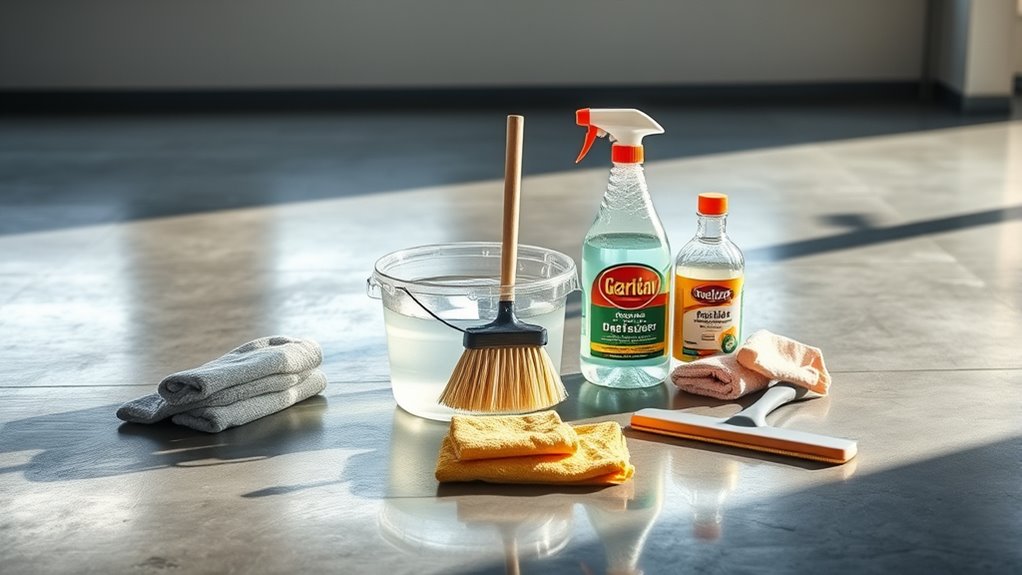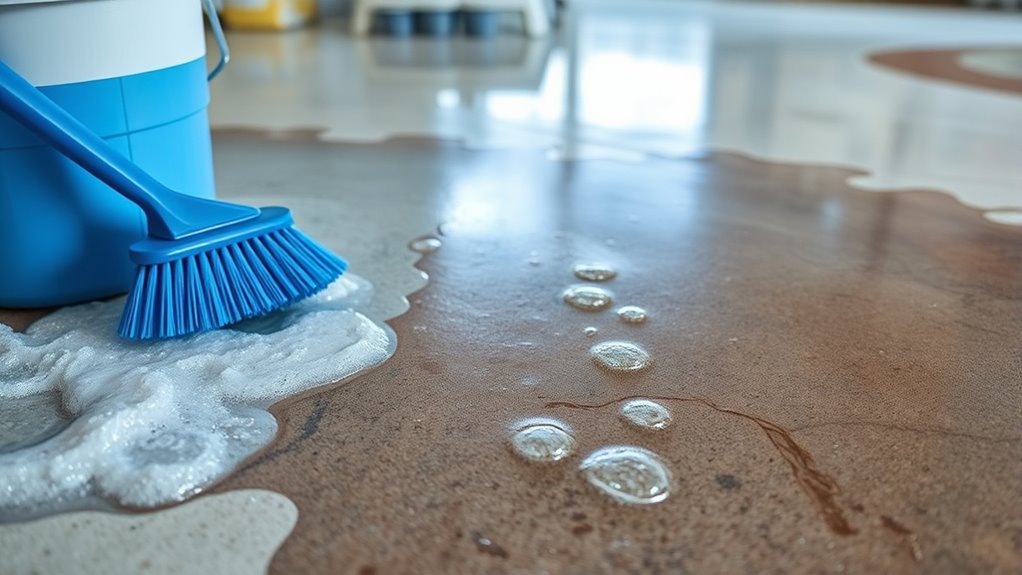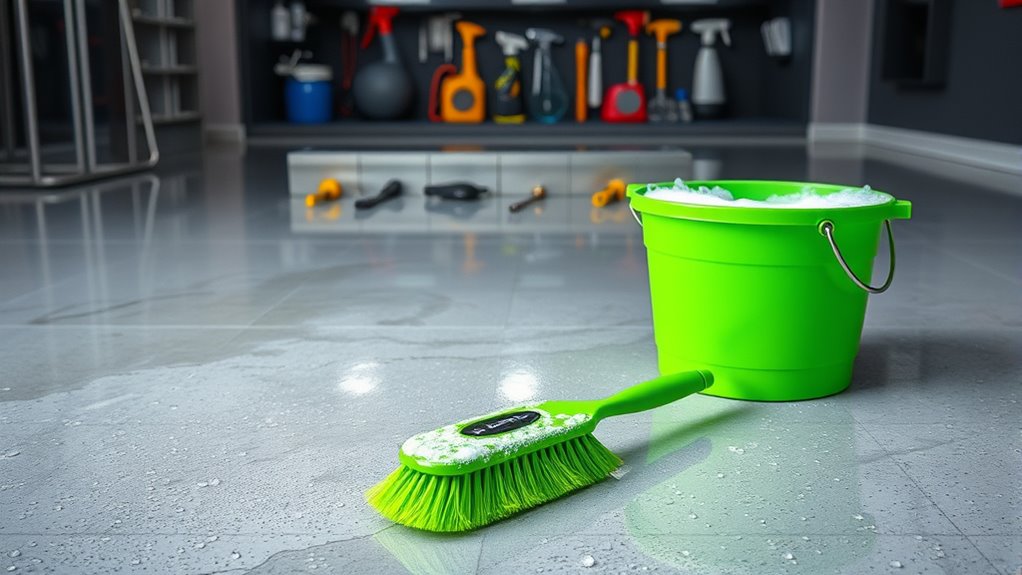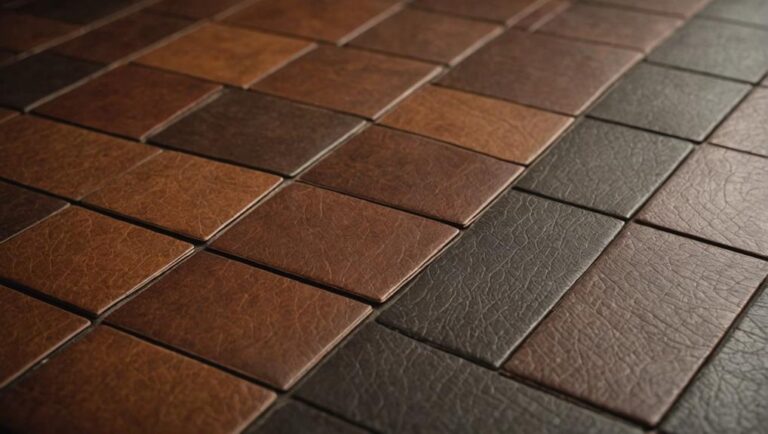First, gather your supplies like a stiff brush, absorbent material, gloves, and a suitable cleaning agent. Next, apply the right cleaner—use a degreaser for fresh oil or a solvent for older stains—and let it sit as directed. Finally, scrub thoroughly with the brush, then rinse with water, avoiding pooling. Acting quickly improves results and safety. If you want to handle tougher stains or maintain your floor better, there’s more valuable info ahead.
Gather Your Cleaning Supplies

Before you begin removing oil stains from your garage floor, make sure you have all the necessary cleaning supplies on hand. Essential cleaning tools include a stiff-bristled brush, absorbent materials like kitty litter or sawdust, protective gloves, and a bucket for mixing solutions. Having these ready allows you to act swiftly, which is vital for effective stain prevention. Early intervention limits oil penetration, making removal easier and protecting your floor’s surface. Additionally, keep a degreaser or a suitable cleaning agent nearby—but don’t apply it just yet. Preparing your workspace with proper ventilation and ensuring you have a sturdy scraper or putty knife can enhance your cleaning efficiency. Gathering these supplies upfront gives you the freedom to tackle stains promptly and confidently, minimizing damage and maintaining your garage’s appearance.
Apply a Cleaning Agent to the Stain
Two key steps guarantee effective stain removal: selecting the right cleaning agent and applying it correctly. Different stain types—fresh oil, grease, or old, set-in marks—require specific cleaning agents formulated to break down their unique chemical compositions. For fresh oil, a degreasing detergent works best; for older stains, a poultice or solvent-based cleaner may be necessary. Always follow manufacturer guidelines to avoid damaging your garage floor.
Apply the cleaning agent directly onto the stain, ensuring full coverage. Avoid diluting unless instructed, as concentration affects efficacy. Use a brush or applicator to spread the agent evenly, targeting the entire affected area. Let it sit for the recommended time to penetrate and loosen the stain. Proper application maximizes the cleaning agent’s ability to lift the oil, setting you up for successful removal in the next step.
Scrub and Rinse the Affected Area

Grab a stiff-bristled brush and vigorously scrub the treated area to agitate the cleaning agent and break down the oil residue. Focus on scrubbing techniques that apply firm pressure in circular motions, maximizing contact with the stained surface. This method guarantees deep penetration, loosening embedded oils effectively. Once you’ve scrubbed thoroughly, it’s time to rinse. Use a high-pressure hose or a strong stream of water to wash away loosened particles and cleaning agents. Effective rinsing methods prevent residue buildup and prepare the surface for drying. Avoid pooling water to reduce slip hazards and potential re-soiling. By combining targeted scrubbing techniques with appropriate rinsing methods, you reclaim your garage floor’s clean, oil-free condition, granting you the freedom to use your space without worry.




